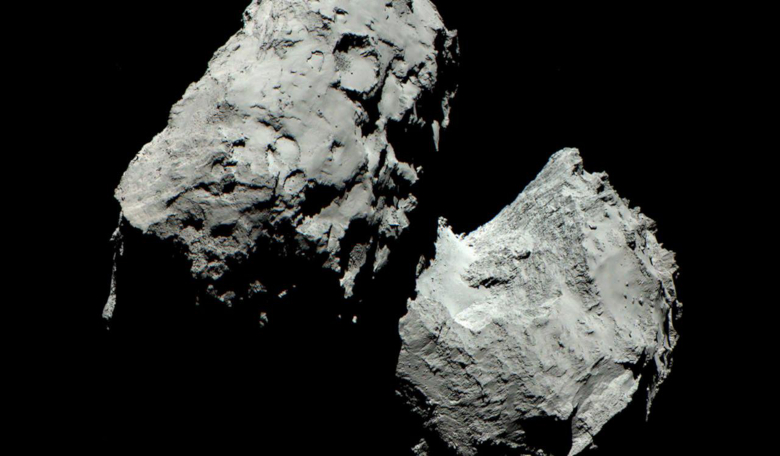Using an instrument on board ESA’s Rosetta spacecraft, researchers have detected solid dust particles of phosphorus and fluorine; a finding that helps boost the theory that important elements necessary for life may have been delivered to Earth by comets.
Launched on 2 March 2004, Rosetta, a space probe built by the European Space Agency (ESA) set out on a journey to become the first spacecraft to examine up close the activity of a frozen icy body as it was warmed by the Sun.
The comet was 67P/Churyumov-Gerasimenko and the journey to study this relic of the Solar System took 10 years.
During the probe’s 17 month stay around the comet, Rosetta completed the most detailed study of a comet ever attempted, using a host of instruments, one of which was COSIMA (Cometary Secondary Ion Mass Analyser).
Built by the Max Planck Institute for Extraterrestrial Physics, COSIMA was designed to study the chemical composition of the comet’s dust environment as well as processes that occur in, on, and near the cometary nucleus.
Although the mission was terminated four years ago when the spacecraft made a controlled impact onto the comet’s surface, scientists have been pouring over the data ever since and one such team who has been studying particles emitted from the comet’s inner coma and collected by COSIMA, have identified a key element essential for life on Earth; phosphorus.
Phosphorus is vital as it is used in the creation of DNA, cell membranes, and is required by all living organisms to produce energy.
However, despite its importance, phosphorus is a relatively rare compound on Earth and it is usually found locked up in rocks as the mineral apatite.
It is not the first time that phosphorus has been found in a comet though.
The first detection of this crucial element was made by NASA’s Vega 1 mission as it flew by comet 1P/Halley in 1986.
It was later detected in dust particles collected by NASA’s Stardust spacecraft during the flyby of comet 81P/Wild in 2004, and has already been detected on comet 67P/C-G by another of Rosetta’s instruments - ROSINA (Rosetta Orbiter Spectrometer for Ion and Neutral Analysis). This detection though was of phosphorous in the gas phase.
Although an important find in its own right, gaseous forms of phosphorus were unlikely to have been present as a major species in the early Earth atmosphere, say the authors in their research paper, who also discovered fluorine in the solid dust particles collected from comet 67P/C-G.
Whats more say the team, led by Harry Lehto at the University of Turku, the phosphorus does not come from an apatite mineral, meaning it occurs in some more reduced and possibly more soluble form - the type that cells need for nucleotide synthesis (nucleotides are required for cell growth and replication).
But, it takes more than phosphorus for life to exist; it also needs carbon (c), hydrogen (h), nitrogen (n), oxygen (o) and sulphur (s) – a group that has become known as the life-necessary CHNOPS-elements.
Past studies of the icy object have already found CHNOS in solid form on comet 67P/C-G, all that had been missing, until now, was phosphorus.
“This result completes the detection of life-necessary CHNOPS-elements in solid cometary matter, indicating cometary delivery as a potential source of these elements to the young Earth,” say the team in their research paper recently published in the Monthly Notices of the Royal Astronomical Society.
“It is possible to seed the required elements with solid cometary matter, that is rich in volatiles. Although, more importantly, the compounds must be reactive and soluble, no matter how they are delivered,” they add.
The team suggest that further cometary sample-return missions would be beneficial in helping researchers confirm the presence of all compounds and how soluble the matter is. “This would also allow for a comprehensive analysis of the relative amounts of these CHNOPS-elements,” Lehto and colleagues conclude.











